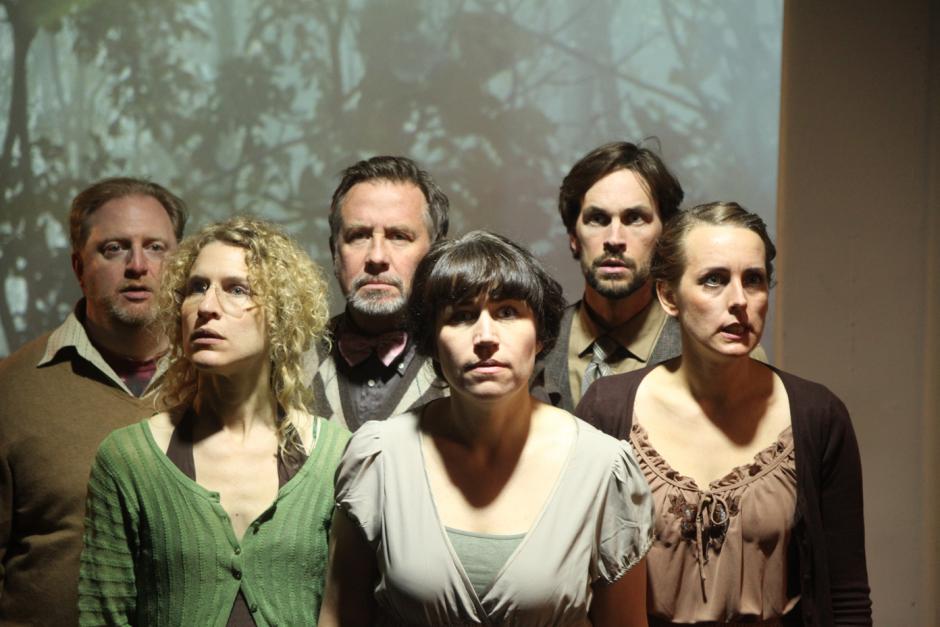The Power of the Collective Voice

This article was featured in the Fall/Winter 17/18 issue of InStudio Magazine.
Choral music occupies a unique and peculiar position. For many audiences and musicians it's somewhat of an outlying medium, dogged with a reputation (arguably an unfair one) for stuffy traditionalism and prosaic repertoire. On the other hand, it's hard to deny the very particular energy that collective singing exudes. It's a form that stretches deep into history and traverses innumerable cultural boundaries. It also emerges from a profound and direct connection to human physicality, verbal communication, and community.
The creative leaders behind Banff Centre's new Choral Arts program are acutely aware of this power and have built their careers around channeling it through innovative and invigorating programming.
“There are only possibilities, there's no right and wrong,” enthuses the program's guest lecturer, Danish-born, Stockholm-based conductor Lone Larsen.
Larsen is as reverent toward choral music's rich histories as she is intrigued by reconfiguring—even upending—its in-built hierarchies. Since 1999, she's led lauded vocal ensemble Voces Nordicae on an exciting journey, freely weaving elements of the choral literature, contemporary works, Nordic folk traditions, and improvisation. The group's diverse stylistic palette is framed within an equally broad and unconventional performance aesthetic that springs from Larsen's commitment to collaborative exploration.
“Sometimes the creativity is mostly kept to the conductors. And, I mean I'm a conductor, so I love that,” she laughs. “But you can get to a point where singers are more like organ pipes than human beings.”
Larsen strives for the opposite scenario: one that recognizes the agency of everyone involved—choristers, audience, and conductor alike. As such, questions, even ones pertaining to her own leadership role, are a key ingredient in her methodology. They're so crucial that she's engaged external artists, such as theatre professionals, to help address them with the group.
“How can the singers' creativity be part of what is happening here and now onstage?” and “what is the centre of the performance?” are among her central concerns.
The resultant performances are a potent amalgam of movement, theatrics, atypical staging, and audience interaction. Larsen will often stand behind the audience to provide an unmediated interaction between listeners and vocalists. Some concerts have audiences texting raw, conceptional material to the choir, or even conducting the ensemble themselves, leaving the performers room to play. “The singers have a lot of responsibility, but a lot freedom,” Larsen notes.

Larsen also lectures at the Ersta Sköndal Bräcke University College in Stockholm and encourages the same thirst for discovery in her pupils, even when they're working on standard repertoire.
Group exercises are one of her primary pedagogical tools for engendering “curiosity, creativity, spontaneity, and presence.” Recognizing that singers often allow inhibitions about their own voice to limit their musicality, she's crafted activities that don't work until participants suspend their compulsion toward self-judgement. For instance, she'll pair singers up, asking them to sing directly to one another. For classically trained singers it's a disarmingly intimate exercise, but according to her, it helps them “sing with the responsibility to include and welcome the listener.” Larsen asserts that shifting the focus in this manner makes the singing freer and more present.
For those pursuing conducting, she coaxes out a similar sort of focus by cultivating an awareness of the body and how movement communicates.
Choral Art Program Director Michael Zaugg initially met Larsen during his student years at the Royal Academy of Music in Stockholm and the two have since maintained strong collegial and personal ties. He shares her penchant for innovation and is similarly preoccupied with the medium's social dynamics, but comes at it from a different vantage point altogether.
Zaugg began to acquire his present outlook during his late teen years. The Swiss native travelled to choral festival across Europe, and further afield, where he first experienced the power of “[sitting] within a group that couldn't be any more diverse but you have that common goal, which is making music.
“Through singing about something very concrete,” he adds, “you have to really go far deeper into an understanding of what your own culture is, and which elements of these disparate cultures are shared. To sing with people from all over the world really gives you a completely different understanding of what is possible through music.”
For Zaugg, the medium's mixture of spoken language and sonic texture is what sets it apart from other forms of musical expression. It has the potential to stimulate two very different faculties within audiences simultaneously. He cites a recent program by Edmonton's Borealis Choir entitled Politicoro where the 50-minute bill's hot-button subject matter prompted a post-concert talkback that was more than double the duration of the music.
“You might go hear some Ligeti and though you may not like the aesthetic, you can always just think about how to marinate the chicken for dinner,” he says, cheekily referencing the modernist composer's famed wordless choral abstraction. “As soon as you have someone in front of you singing texts, there's certainly a reaction to it.”
Zaugg also provides the artistic direction for Pro Coro Canada, a celebrated 24-member choir from Edmonton noted for its eclectic and dynamic programming. His curatorial motto? “I'm a guardian of the past, I'm an advocate of the present, and I foster the future.”
Kyle Brenders, Banff's Performing Arts Programs Manager, notes the new program is a bit of a return to form. Choral training was one of Banff's earliest programs, instituted in 1937, but shifting priorities throughout the 1970s and ‘80s precipitated a move away from the art form. Brenders feels there are compelling reasons to revisit it.
“It's important to me to have choral music represented at Banff because of its history at the Centre and its ability to connect to a broader community of musicians,” he says. “Collective singing welcomes musicians and listeners in a way that's somehow more immediate and visceral than instrumental music.”
Nick Storring is an award-winning composer and National Magazine Award-nominated writer based in Toronto.





